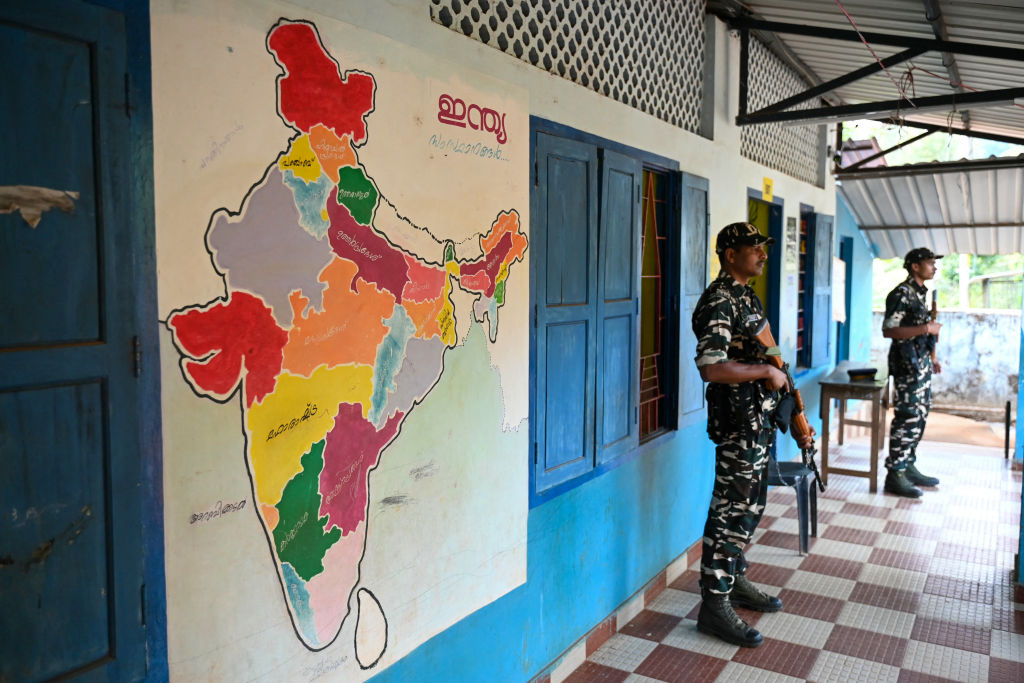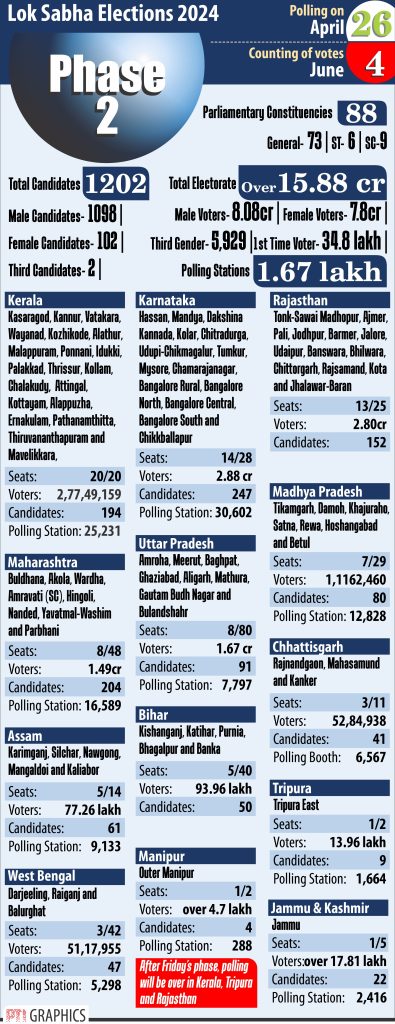- Sunday, May 05, 2024
More than 1,200 candidates are in fray in this phase and nearly 159 million voters are eligible to cast ballots.

By: Shubham Ghosh
ON Friday (26), the second phase of India’s mammoth national elections will be held and while 88 constituencies in 13 states and Union Territories will vote in this phase, all eyes will be particularly on the southern states of Kerala and Karnataka where some big names are contesting. While all 20 constituencies of Kerala will vote in this phase, Karnataka will vote partially with 14 out of 28 seats going to polls.
The fates of more than 1,200 candidates will be decided in the second phase in which 158.8 million voters are eligible to cast ballots. Nearly 81 million of the voters are males while 78 million are females. Voting will be held in 167,000 polling booths. Adequate arrangements for security have been made for the voting while schools and institutes in many of the poll-bound states and UTs will remain closed on the day.
Rahul Gandhi, former president of India’s main opposition Indian National Congress, is contesting from the Wayanad constituency in Kerala where he first won in 2019. The 53-year-old is one of the country’s foremost critics of prime minister Narendra Modi but is yet to register an electoral win over his heavyweight opponent.
Read: Indian expats in UAE rush home to voter in second phase
He will be challenged by K Surendran, the Kerala state president of Modi’s Bharatiya Janata Party which is also looking to win its first parliamentary constituency from the state.

Also in the fray is Shashi Tharoor, a former federal minister of India who has also worked in a top position in the United Nations and is also known to be an acclaimed author. The sitting Congress MP from Thiruvananthapuram is challenged from the seat by the BJP’s Rajeev Chandrasekhar, India’s junior minister of state for information technology and electronics.
Read: Four Indian states to vote on April 26 amid heatwave; experts worried over turnout
In Mandya in Karnataka, the Congress’s Venkataramane Gowda, also called Star Chandru, is taking on former chief minister of the state, KD Kumaraswamy, who is from the Janata Dal (Secular), an ally of the BJP in this election in the southern state.
In the north, former Bollywood star Hema Malini is eyeing her third consecutive win from Mathura in the state of Uttar Pradesh although her constituency is reportedly disappointed by her less attendance on the ground. She can still take confidence from the fact that Mathura is a stronghold of the BJP. Hema Malini will contest against Mukesh Dhangar, the chief of the Congress party in India’s most populous state which the Hindu nationalist party has swept in the past two national elections.
The election kicked off on April 19 when 102 constituencies in 21 states and UTs went to polling and a voter turnout of around 64 per cent was recorded. The election will take place in seven phases and the results will be announced on June 4. Nearly a billion people are eligible to cast ballots in these elections — more than the combined population of the US, European Union and Russia.
India, with a population of 1.44 billion, is the world’s largest democracy.
This election is witnessing a direct contest between the National Democratic Alliance led by Modi eyeing a rare third consecutive term and the opposition Indian National Developmental Inclusive Alliance bloc comprising more than two dozen parties including the Congress that aims to prevent Modi’s dream come true.
The Lok Sabha or popularly elected Lower House of the Indian parliament has 543 seats and any party/alliance winning the majority number of 272 seats will form the government.
The voting will begin at 7 am local time and continue till 6 pm. Voters standing at the queue by the time the polling closes will get to vote even if that means keeping the stations open for a longer period.
While voting took place for both seats of the violence-hit north-eastern state of Manipur during the first phase, the Outer Manipur constituency is heading to polls for a second time in the second phase.
Of the 88 seats going to polling on Friday, the NDA won 62 in the previous elections in 2019. the former United Progressive Alliance, which preceded the INDIA bloc in the 2019 elections, along with its United Democratic Front in Kerala, won 23. Two seats went to independent candidates in the states of Karnataka and Maharashtra while some constituencies were redrawn under delimitation.
One of the challenges for both the organisers of the election and voting will be heat. Four of the poll-bound states have heatwave alerts and election officials fear it could have an adverse impact on the eventual turnout.
![]()